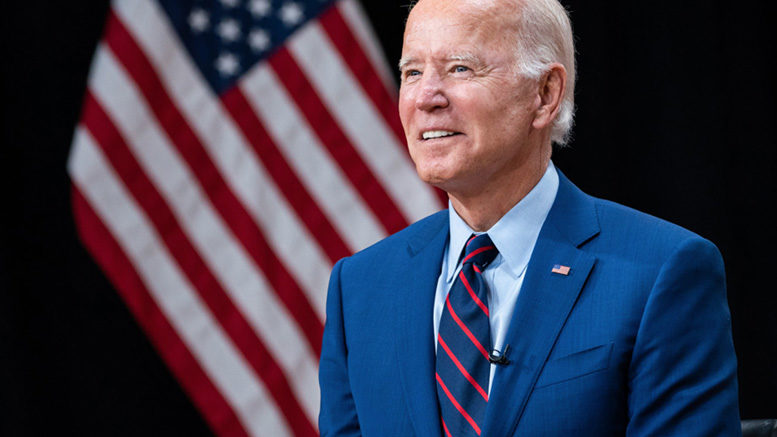Free community college is a cornerstone of the Biden administration’s $1.8 trillion American Families Plan (AFP), which was officially announced today.
The plan is designed to grow the middle class, expand the benefits of economic growth to all Americans and make the country more competitive. It calls for $109 billion for two years of free community college, among other education investments to close equity gaps and make college more affordable.
“The current crisis has led to a steep college enrollment decline, particularly for low-income students and students of color,” said a fact sheet from the White House. Free community college, which would extend to Dreamers, would ensure “that first-time students and workers wanting to reskill can enroll in a community college to earn a degree or credential for free.”
Students will be able to use the benefit over three years — or up to four years, if circumstances warrant it. If all states, territories and Tribes participate, about 5.5 million students would pay $0 in tuition and fees, according to the fact sheet.
The American Association of Community Colleges (AACC) supports the proposal, said AACC President and CEO Walter Bumphus.
“It invests in strengthening the nation’s middle class and targeting barriers to college completion,” Bumphus said. “A key element of the plan is making community college free for two years, which AACC has long endorsed.”
Other postsecondary investments
In addition to free community college, AFP would increase the maximum Pell Grant by $1,400 – an investment of approximately $85 billion. It’s considered “a down payment on President Biden’s commitment to double the maximum award,” the fact sheet stated.
“Increasing Pell Grants and providing resources to enhance support services will help students to enroll and persist in high-quality programs, which will allow them to learn the skills needed to obtain family-sustaining wage jobs,” Bumphus said.
Also included in the plan is $62 billion for evidence-based strategies to increase completion and retention rates at colleges and universities that serve high numbers of low-income students, particularly community colleges.
Through this investment, grants would be distributed to states, territories and tribes. They would pass that funding on to colleges that adopt innovative, proven solutions for student success, including wraparound services, such as childcare and mental health services, emergency basic needs grants, transfer agreements between colleges and evidence-based remediation programs.
“Inequities in college attendance and completion are pervasive among low-income and students of color, and community colleges serve higher percentages of these students than any sector of higher education,” Bumphus said. “By targeting support on these students, the American Families Plan will help eliminate longstanding attainment gaps.”
Funding also could support faculty and peer mentoring, practices that recruit and retain diverse faculty.
Another $46 billion would support historically Black colleges and universities (HBCUs), tribal colleges and universities (TCU) and other minority-serving institutions (MSIs). These institutions would be able to provide subsidized tuition and expand programs in high-demand fields. It would make college more affordable for students enrolled in a four-year HBCU, TCU or MSI.
Funds also would expand existing institutional aid grants to HBCUs, TCUs and MSIs, so they can strengthen academic, administrative and fiscal capabilities, including by creating or expanding educational programs in high-demand fields. And $2 billion of the $46 billion would be directed towards building a pipeline of skilled healthcare workers with graduate degrees.
And the rest
The American Families Plan also includes:
- $200 billion for universal preschool for all three and four-year-old children
- Unemployment Insurance (UI) reform to adjust the length and amount of UI benefits unemployed workers receive depending on economic conditions
- $225 billion for child care for low- and middle-income families to ensure they pay no more than 7% of their income on high-quality child care for children under 5-years-old, as well as an investment in the early child-care workforce
- $225 billion for a national paid family and medical leave program
- $800 billion to extend the Child Care Tax Credit increase through 2025 and permanently extend the Child Tax Credit, the Earned Income Tax Credit expansion for childless workers, the Child and Dependent Care Tax Credit as well as ACA premiums tax credits.
Though these investments don’t directly impact community colleges, they do affect community college students, many of whom are parents.

